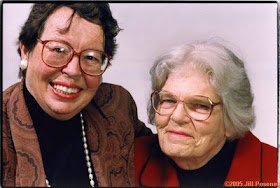Julius 11 (1443-1513) positioned himself for high office during the reign of his uncle Sixtus IV. A lover of art, he patronized both Michelangelo and Raphael, and in 1506 he laid the foundation stone for the magnificent church of New St. Peters. However, Julius' military conquests caused friction with the king of France and the German emperor. At their behest a council met in Pisa in 151 1 to consider his deposition. Arraigned as "this sodomite, covered with shameful ulcers, who has infected the church with his corruption," Julius nonetheless managed to prevail by calling his own council, which was still in session when he died in May 1513.
Rumors that Pope Julius II (Giuliano Della Rovere, 1443-1513) was involved in numerous homosexual liaisons are reported both in Protestant polemical tracts and in official reports submitted by ambassadors from friendly Catholic powers. Although the Protestant sources must be regarded as inherently biased, the frequency of these accounts suggests that they may be accurate. Julius's enthusiastic patronage of Michelangelo's homoerotic depictions of the male figure also indicates that he may have fully appreciated the physical beauties of men.
Appointed Cardinal in 1471 by his uncle, Sixtus IV, Della Rovere revealed great diplomatic skill in his negotiations with various European powers. As Pope, Julius acted as a very effective general for the papal armies, and, by 1508, he recaptured the Italian region of Romagna for the Papal States. Through his patronage of various artistic projects, Julius hoped that Catholic Rome would regain and even surpass the splendor of the city at the height of the Roman Empire.
As part of his renovation of the fabric of the city, Julius ordered in 1506 that the Early Christian Basilica of Saint Peter's be demolished and replaced by a new structure, designed by Donato Bramante (1444-1516), who was the first Renaissance architect to create structures with the sense of weight and strong physical presence of ancient Roman monuments. Bramante's Tempietto (1502, Rome) had been the first Renaissance structure to employ ancient architectural orders in a correct fashion. For Saint Peter's, Bramante envisioned an immense centralized structure with a Greek cross plan. Among the elements based on ancient prototypes was the saucer dome, inspired by the Pantheon, Rome (118-25).
When he undertook the construction of the New Saint Peter's, Julius resolved that his tomb would be placed directly underneath the central dome. Michelangelo (1475-1564) envisioned a monumental funerary structure with three stories, decorated with forty-seven life-size statues. Constant changes in plans, required first by Julius and subsequently by his heirs as well as by successive popes who did not want his monument to detract from theirs, were among the many factors that inhibited the realization of the original plans. However, Michelangelo had begun by 1513 the heroic, muscular figure of Moses, which was incorporated into the truncated version of the monument assembled in San Pietro in Vincoli, Rome, in 1545. Of uncertain meaning, sensuous nude figures, the Rebellious Captive and Dying Captive (1513-19, both Louvre, Paris), also were created for the tomb.
By the end of 1506, Julius compelled Michelangelo to undertake the Sistine Ceiling, even though the artist did not believe that he had sufficient talent to complete this project. Over the next two years, the final program for the ceiling was developed through often heated negotiations between the Pope and the artist. The nine narrative scenes down the center of the ceiling narrate the history of creation, the fall of the human race through original sin, and the establishment of a Covenant between God and the Chosen People, led by Noah. These panels are displayed in a fictive stone framework, which seems to have the weight of Bramante's actual structures. The figures became increasingly large in size, heroic in musculature, and dynamic in movement as work progressed from the chronologically later scenes of Noah toward the initial stages of Creation. Located approximately in the middle of the ceiling, the Creation of Adam visualizes a balance between human potential and divine power.
The program also includes enthroned figures of sibyls and prophets to the sides of the narrative panels. Sensual nude male figures are seated at the corners of the five smaller narrative panels. The meaning of these nudes is uncertain, but their homoerotic qualities cannot be denied. Insignia of the Pope's family, including oak leaves and acorns, are displayed throughout the ceiling.


